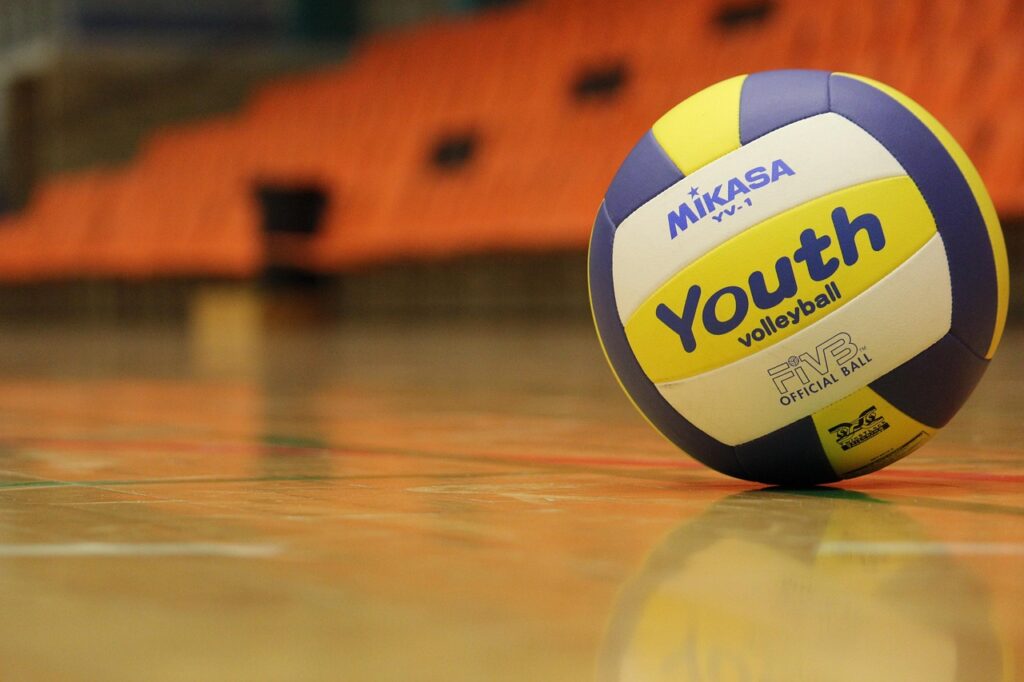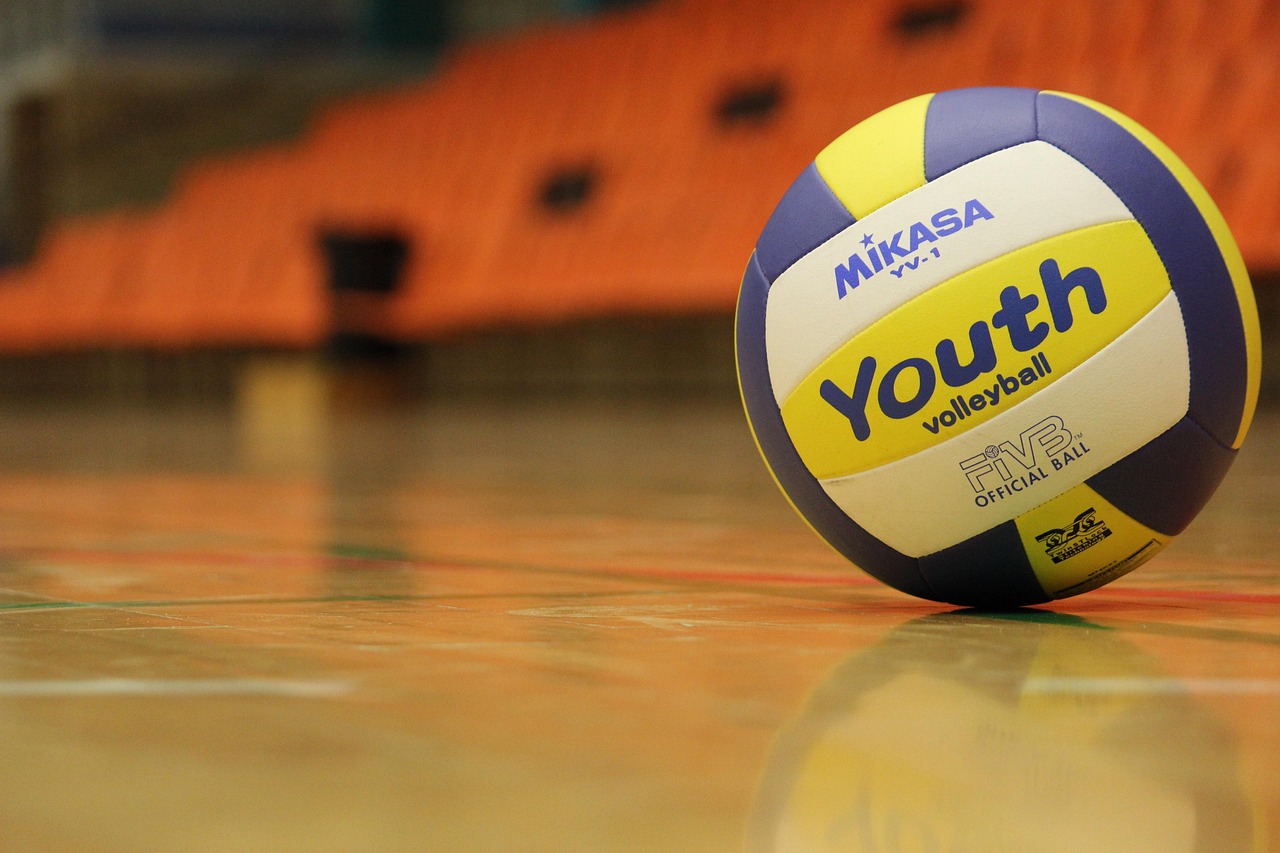Imagine stepping onto a pristine indoor volleyball club court, the surface smooth under your sneakers, the lines crisp, and the net taut. For volleyball lovers, this is more than just a playing surface—it’s where spikes, serves, and epic rallies come to life. But have you ever wondered, how are indoor volleyball club courts made?
From choosing the right materials to ensuring long-term durability, building these courts is both an art and a science.
In this guide, we’ll walk you through the process, share expert insights, and sprinkle in a story of a community that transformed a rundown gym into a volleyball haven. Whether you’re a player, coach, or club owner, this post is your go-to resource for understanding the craft behind indoor volleyball club courts.
How Are Indoor Volleyball Club Courts Made?

Creating an indoor volleyball club court starts with understanding its components. A standard court measures 18 meters long by 9 meters wide, with a free zone around it for safety. The surface, subfloor, and markings all work together to ensure safety, performance, and durability.
According to the Fédération Internationale de Volleyball (FIVB), over 800 million people play volleyball globally, and high-quality courts are critical for competitive play. Let’s break down the process of making an indoor volleyball club court.
Step 1: Planning and Design
Before any construction begins, careful planning is key. This involves selecting a location, determining budget, and ensuring compliance with regulations. For example, the court must meet FIVB or USA Volleyball standards for competitive play.
- Key Considerations:
- Space: Ensure enough room for the court and a 3-meter free zone.
- Budget: Factor in materials, labor, and long-term maintenance.
- Usage: Will the court host recreational or competitive play?
Step 2: Choosing the Right Surface
The surface is the heart of any indoor volleyball club court. Common materials include synthetic options like polyurethane or PVC, hardwood, or modular tiles. Each has pros and cons, balancing cost, durability, and player safety.
- Synthetic Surfaces: Popular for their shock absorption and low maintenance.
- Hardwood: Offers a premium feel but requires regular upkeep.
- Modular Tiles: Easy to install and replace, ideal for multi-use facilities.
A 2023 study by the American Sports Builders Association (ASBA) found that 65% of new indoor volleyball courts use synthetic surfaces due to their cost-effectiveness and player-friendly properties.
The Construction Process: From Blueprint to Game-Ready
1. Laying the Foundation
The journey to a stellar court begins with the subfloor. A level, stable base is crucial to prevent cracks or uneven surfaces.
Contractors often use concrete or asphalt as the base layer, followed by a cushioning system to reduce impact on players’ joints.
2. Installing the Cushioning Layer
To enhance player comfort, a foam or rubber underlay is added. This layer absorbs shock, reducing the risk of injuries like shin splints. For example, in 2019, a small-town volleyball club in Ohio transformed their outdated gym.
The team, led by Coach Sarah, rallied the community to fund a cushioned subfloor. The result? A court that not only boosted performance but also became a hub for local tournaments.
3. Applying the Surface
Once the subfloor is ready, the surface material is installed. For synthetic courts, rolls of vinyl or polyurethane are laid out and adhered to the subfloor.
Hardwood courts require precise installation of planks, followed by sanding and sealing. Modular tiles snap together like puzzle pieces, offering flexibility for temporary setups.
- Pro Tip: Ensure proper ventilation during installation to avoid adhesive fumes affecting air quality.
4. Marking the Court
Precision is everything when marking lines. Using FIVB guidelines, contractors paint boundary lines, attack lines, and service zones.
Lines are typically 5 cm wide and must contrast with the surface for visibility. For multi-sport facilities, removable tape or multi-colored lines can accommodate other sports.
Maintaining an Indoor Volleyball Club Court
1. Routine Cleaning and Care
Maintaining an indoor volleyball club court is just as important as building one. Regular cleaning prevents dirt buildup, which can make surfaces slippery. Use a damp mop with a mild, non-abrasive cleaner to keep the court in top shape.
- Daily Maintenance:
- Sweep or vacuum to remove dust and debris.
- Spot-clean spills immediately to prevent stains.
- Weekly Maintenance:
- Deep clean with a court-specific solution.
- Inspect for wear, such as cracks or fading lines.
2. Periodic Upgrades
Every few years, courts need resurfacing or refinishing. For synthetic courts, this might mean applying a new topcoat.
Hardwood courts may require sanding and resealing. Regular inspections can catch issues early, saving costly repairs.
Eco-Friendly Tools for Court Construction
Sustainability is a growing concern in sports facility design. Below is a table comparing eco-friendly tools and materials for making an indoor volleyball club court.
| Material/Tool | Eco-Friendly Feature | Pros | Cons |
|---|---|---|---|
| Recycled Rubber Underlay | Made from recycled tires | Reduces waste, excellent cushioning | Higher initial cost |
| Low-VOC Adhesives | Emits fewer volatile organic compounds | Improves indoor air quality | May require longer curing time |
| Bamboo Flooring | Fast-growing, renewable resource | Durable, aesthetically pleasing | Expensive, requires skilled labor |
| LED Lighting | Energy-efficient, long-lasting | Reduces energy costs | High upfront installation cost |
| Water-Based Sealants | Low environmental impact | Safe for players and installers | Less durable than solvent-based |
Top 5 Tips for Building and Maintaining Indoor Volleyball Club Courts
For a featured snippet-friendly list, here are the top tips to ensure your court is game-ready:
- Choose the Right Surface: Opt for synthetic surfaces for low maintenance or hardwood for a premium feel, based on your budget and usage.
- Invest in Quality Subflooring: A cushioned subfloor reduces injuries and enhances player comfort.
- Follow FIVB Guidelines: Ensure court dimensions and markings meet official standards for competitive play.
- Schedule Regular Maintenance: Clean daily and inspect weekly to extend the court’s lifespan.
- Go Green: Use eco-friendly materials like recycled rubber or low-VOC adhesives for a sustainable court.
FAQs About Indoor Volleyball Club Courts
How long does it take to build an indoor volleyball court?
Construction typically takes 4–8 weeks, depending on the facility size, surface type, and site preparation needs.
What’s the most durable surface for indoor volleyball courts?
Synthetic surfaces like polyurethane are highly durable and low-maintenance, making them ideal for heavy use.
How often should I resurface my court?
Synthetic courts need resurfacing every 7–10 years, while hardwood courts may need refinishing every 5–7 years.
Can I use my court for other sports?
Yes! Multi-sport markings or modular tiles allow courts to accommodate basketball, badminton, and more.
How much does it cost to build an indoor volleyball court?
Costs range from $20,000 to $100,000, depending on materials, labor, and facility size. Get a quote from a trusted contractor for accuracy.
Bringing It All Together
From planning and material selection to installation and maintenance, how indoor volleyball club courts are made is a fascinating blend of engineering and passion for the sport.
Whether you’re dreaming of building a new court or keeping an existing one in top shape, the process requires attention to detail and a commitment to quality.
Inspired? Leave a comment below telling us about your volleyball journey so far!
